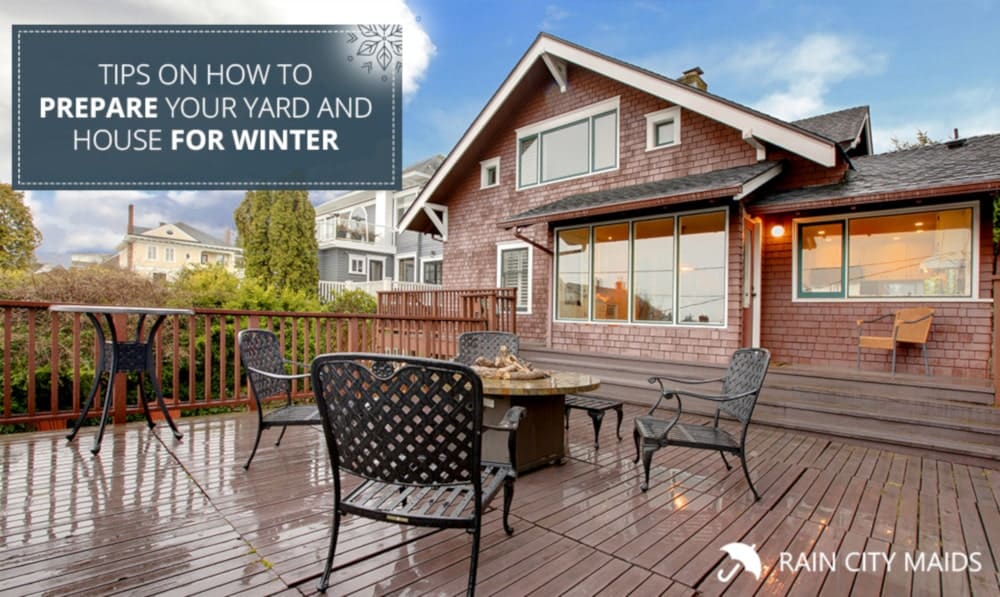As the seasons transition from scorching heat to chilly cold, fall presents a golden opportunity to give your yard the care it deserves. It's a time to rejuvenate and prepare your outdoor space for the upcoming winter.
Just like humans, yards also need a little extra attention and nurturing during this time to ensure their health and vitality for the following year. While your yard may have taken a well-deserved break from the summer heat, it's important to remember that it will soon enter a period of dormancy until the arrival of spring.
Therefore, the fall season provides a limited window of time to pamper and prepare your yard for the months ahead. In this blog post, we will guide you through valuable tips on how to ready your yard for winter. From essential maintenance tasks to clever techniques, we'll show you how to transform your yard into a thriving space that will be ready to bloom come springtime.
And if you're looking to revitalize not just your yard but your entire house, stay tuned for our recommendations on house cleaning services that will bring a fresh and inviting atmosphere to your home. Let's dive in and create a picturesque landscape that will endure the winter months with grace.
Here are ten tips on how to prepare your yard for winter:
Don’t wait until the last day of fall.
As fall is harvesting season, your plants are still “awake,” so use these days as an opportunity to prepare them for winter. But start early, because starting too late into the fall (think late November or early December) and your plants might have shut down already. You need to hurry and implement all of our tips as soon as possible, especially if you live in a cooler area where winter is very harsh.
Don’t ignore your pH levels.
Once you decided to get started, make sure your efforts aren’t going to be wasted. Check pH levels in the soil before you apply anything on your yard. Get a small kit so that you can see if there’s any particular part of the land that needs more or fewer nutrients than others. If you apply water, chemicals or compost without care, you might saturate a plant with those things.
Don’t forget to find a good winterizer.
A winterizer is a fertilizer designed to help protect your lawn by giving it a “food” reserve. It’s not for keeping your grass growing during the fall. It should be applied by early November in the north, and maybe December in the south, as long as it’s that time when the grass is no longer growing but still green. Make sure it has ingredients that will strengthen the roots of grass and plants, like potassium and phosphorus, and not so much nitrogen, which is helpful for growth.
You prune, you lose.
Leaves have been falling off trees during the fall for millennia, so nature knows what it’s doing. This means you shouldn’t be too worried about it in your yard, even if it’s good to remove some of it (which is the next tip after this).
Pruning your plants and getting rid of leaves on top of your soil is an unhealthy practice. The earth will be left without any protection during the rainy or snowy months of winter. You also don’t want to prune so much that new growth is triggered and forced to die after only a couple of weeks when winter arrives.
Watch out for those pesky weeds.
Get weeds out of the way even before autumn sets in, because that’s when they get a hold of your yard. They can sneak up on your plants, and by springtime, it might be too late.
Rake leaves and remove debris.
We know we keep telling you to keep the soil covered, then uncovered, but bear with us. It’s about maintaining a balance between protecting your yard and not smothering it when spring comes. Grass shouldn’t be left covered, because it protects the soil by itself and needs all the sun it can get during the winter, but shrubs, plants, and trees need that soil protected, so make sure that’s where you don’t rake and remove as much debris.
Stop or reduce your irrigation system.
If you are in colder weather like Seattle, go ahead and stop your sprinklers completely. Be careful with your pipes and drains. You don’t want any frozen water to spill out and kill your yard. It will also help you save water.
Let some air into your lawn.
Make some space on your soil to get water and nutrients flowing before the winter arrives, so that your plants have enough place to prepare and hunker down for the extreme cold, mainly if it’s used a lot during the summer. This method is especially crucial for grass or bushes.
Cover flower beds.
Flower plants are some of the most delicate you might have in your yard. Either plant these in the fall and wait for them to come out in the spring, or cover your real flowers with a burlap sack.
Bring small plants inside your home.
And if you can’t cover some plants, bring them inside! Small plants, tender bulbs, and some garden herbs might not survive the harsh cold, so if they’re plotted, take them inside. And if they’re not, you can transfer them into some.
Taking care of your yard in the autumn ensures you will have a healthy one with limited weed growth and little to no bare spots. By adding compost in the fall, you are adding nutrients to the soil of your garden beds that will make it pleasant and fertile for next year’s planting season. Hire a professional to help you on how to prepare to landscape for winter.
